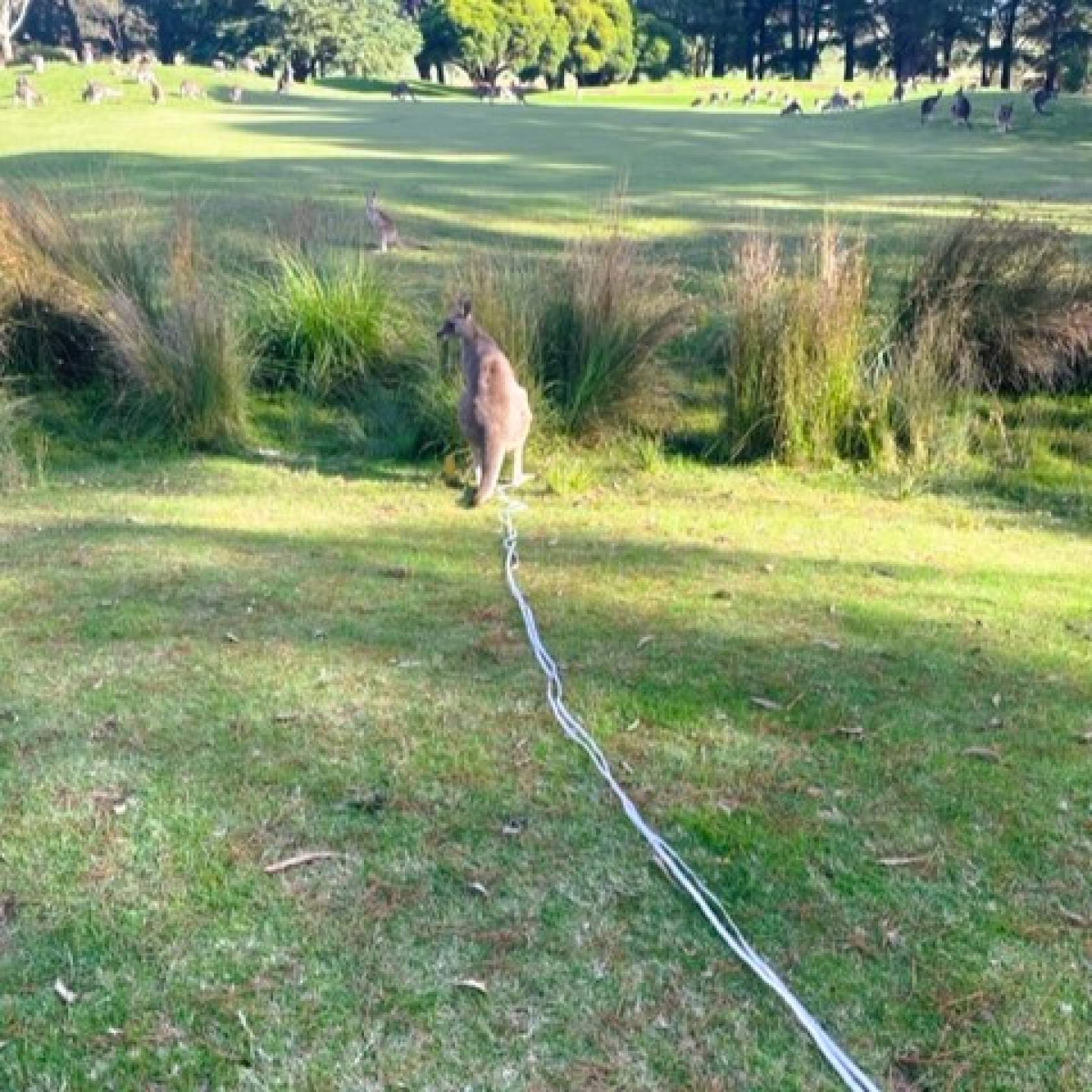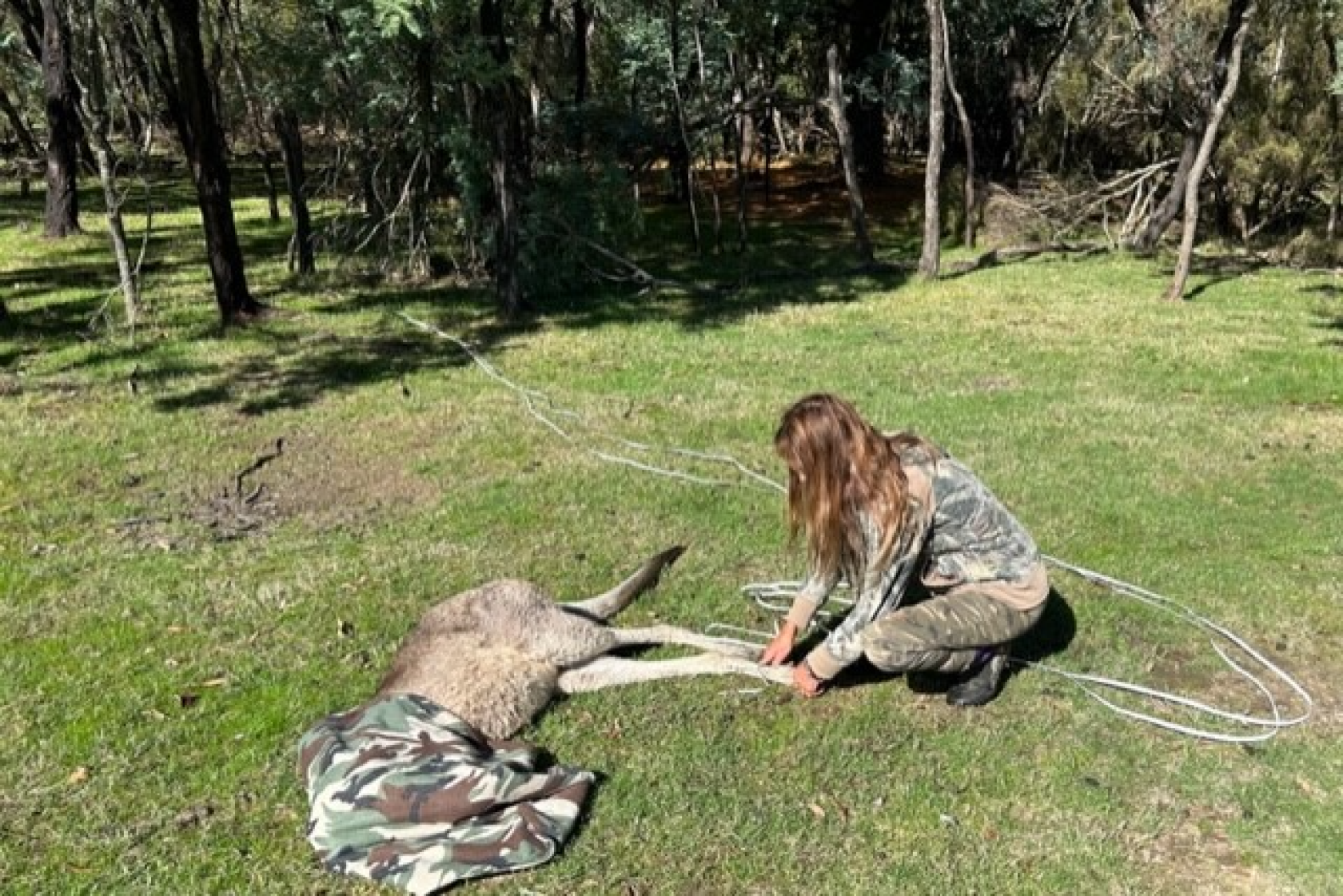
When humans fail to properly deal with rubbish and waste, it directly affects wildlife.
Earlier this year this kangaroo was spotted on a golf course with 20 meters of electrical tape wrapped around its legs, trailing behind as it hopped. The roo was entangled for at least three days and became agitated when some members of the public approached it in an attempt to remove the tape.
Fortunately, one of them thought to call our Emergency Response Service (ERS) and we were able to respond and dispatch one of our trained volunteers.
Wildlife Victoria would like to stress that members of public should never approach agitated native animals, as you could be seriously injured, and/or cause the animal to injure itself. A call to our ERS can provide you with advice and send a trained wildlife rescue volunteer to handle the situation.
This very large, very mobile animal had to be tranquilised and our volunteer was then able to remove the tape from its legs. Luckily, the roo was not hurt and was able to hop away, freed from the rubbish that had been disposed of carelessly.
The Wildlife Victoria volunteer who responded to this case has freed several animals from rubbish, including a cockatoo hanging upside down by knitting wool, a magpie caught up in VHS tape, and birds with tea bag strings around their legs.

“People leave behind hay band, long lengths of string, wire, etc., and the poor creatures get caught up in it. I wish people could see the things we have to deal with, and maybe they would pick up their rubbish,” she says.
The top species most likely to become entangled, according to the last three years of Wildlife Victoria case data:
1. Magpie
2. Eastern grey kangaroo
3. Black Swan
4. Seagull
5. Grey-headed flying fox
Twine, fishing line, wire, elastic bands, chains, plastic bags, fairy lights, fruit tree netting, face masks and outdoor party decorations are just some of the causes of wildlife entanglement reported to us.
Here are some ways you can help prevent wildlife entanglement this Spring:
If you’re picnicking, come prepared with a bag for any rubbish and take it with you when you leave.
Find an allocated public bin to place your waste in, but DO NOT force your rubbish into an already-overflowing bin. Find another bin or take it with you and dispose of it at home.
If you use fruit tree netting, make sure it is safe for wildlife. If you can poke your finger through the holes in the netting, wildlife can become entangled in it. Read our Wildlife-safe netting fact sheet for more information here.
If you encounter any illegal dumping, report it your local council or the EPA with this link.
If we work together, we can help prevent wildlife from becoming entangled in our rubbish.
